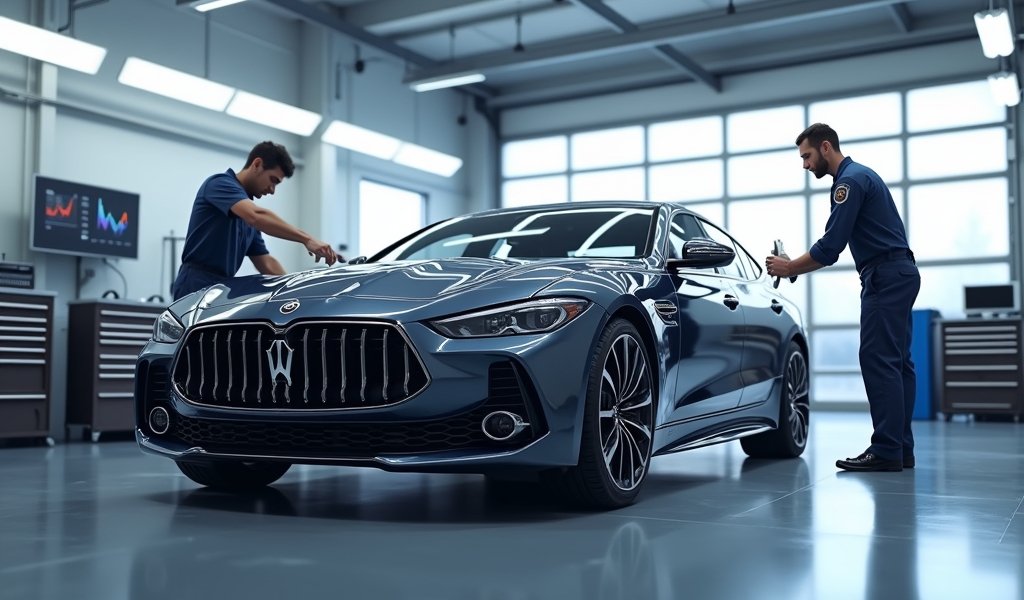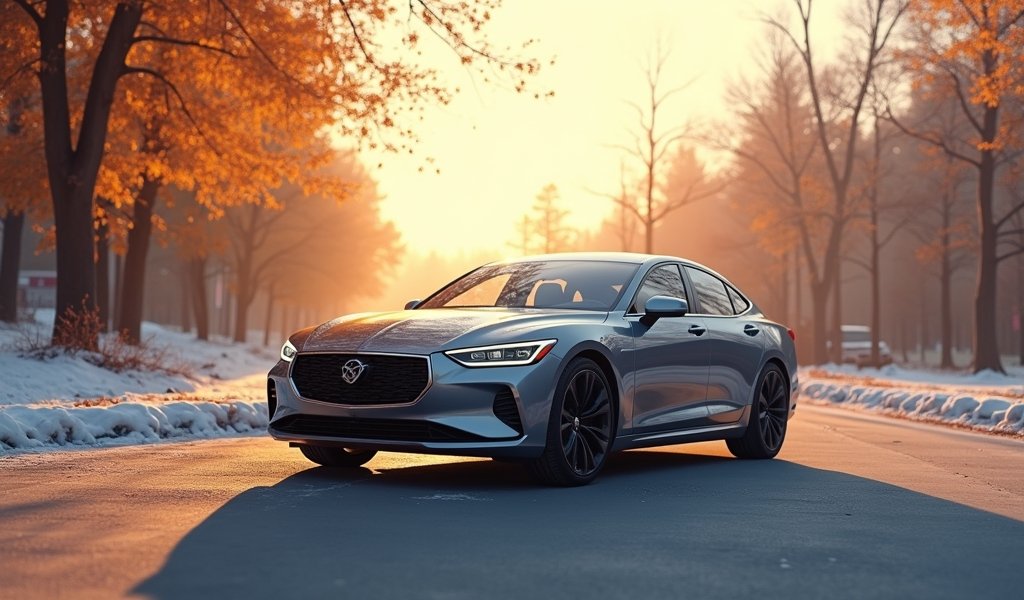Overview
The article details strategic timing for car purchases, highlighting December (especially the week between Christmas and New Year’s) as the ultimate buying period due to month-end, quarter-end, and year-end sales pressures converging. Other optimal buying windows include month-ends when salespeople chase quotas, model-year transitions (August-October), and weekday mornings (particularly Tuesdays and Wednesdays), all of which can save buyers 5-15% compared to shopping during less favorable times like early-month weekends and spring.
Table of Contents
- Introduction
- End of Month: When Salespeople Get Hungry
- End of Quarter: Triple the Pressure, Triple the Savings
- Model Year Transitions: Out With the Old
- Holiday Sales Events: Festive Deals
- December: The Ultimate Car Buying Month
- Worst Times to Buy a Car
- Best Days of the Week for Car Shopping
- Preparation: Your Secret Weapon
- Conclusion
- Frequently Asked Questions
Introduction
Looking for the best time of year to buy a car? As a mechanic who’s spent decades watching the ebb and flow of dealership pricing, I’ve seen firsthand how timing can save you thousands on your next vehicle purchase. Most folks focus solely on negotiation tactics or choosing between a new car or used car, but overlook the calendar’s impact on their wallet.
Car buying doesn’t have to break the bank if you understand when dealerships are most motivated to cut deals. I’ve helped countless customers time their purchases perfectly, and I’ve compiled those insights here to help you do the same. Whether you’re eyeing a shiny new sedan or a reliable pre-owned SUV, strategic timing can be your secret weapon at the car dealership.
In this comprehensive guide, I’ll walk you through the specific times of year when dealers are practically begging to hand over the keys at discount prices. You’ll learn exactly when to shop, why these timing tactics work, and how to combine them with solid car buying tips for maximum savings.
End of Month: When Salespeople Get Hungry

Ever notice salespeople getting increasingly eager as the month winds down? There’s a good reason for this behavior, and it can work in your favor during the car buying process.
Most dealerships operate on monthly sales quotas. Salespeople who hit these targets earn substantial bonuses – sometimes thousands of dollars on top of their regular commission. This creates a fascinating psychological shift as the month progresses.
During the first three weeks, salespeople can afford to be patient. They’ll hold firm on pricing, knowing they still have time to meet their numbers. But those final days? That’s when the pressure cooker really heats up.
How to Leverage Month-End Timing
- Begin shopping 3-4 days before month-end
- Look for salespeople who subtly communicate they need more sales
- Be ready to complete the purchase before the calendar flips
- Maintain willingness to walk away – your strongest negotiating tool
According to research from Edmunds, consumers save an average of 5.3% when purchasing during the last days of a month compared to the beginning. On a $30,000 vehicle, that’s roughly $1,590 in your pocket just by timing your visit.
I recently helped a friend use this strategy on a midsize SUV. The salesperson needed just two more sales to hit their monthly bonus. Result? A $2,700 discount that wasn’t available just a week earlier.
End of Quarter: Triple the Pressure, Triple the Savings
If end-of-month timing offers good opportunities, quarter-end periods can be even more lucrative. Dealerships and manufacturers operate on quarterly business cycles, with March, June, September, and December marking these crucial deadlines.
During these periods, three levels of pressure converge:
- Individual salespeople chasing monthly quotas
- Sales managers pursuing quarterly bonuses
- Dealerships working toward manufacturer incentives
This creates the perfect storm for discount-hungry car buyers. The pressure to move inventory intensifies as managers realize their quarterly numbers aren’t where they need to be.
The final week of any quarter typically offers savings of 7-8% below MSRP, compared to 5-6% during regular month-ends. On a $35,000 vehicle, that’s an additional $700 in your pocket simply by timing your purchase more strategically.
When negotiating during quarter-end, subtly mention that you’re aware of the timing. A simple “I know it’s quarter-end, so I’m hoping we can work out something mutually beneficial” acknowledges that you understand the dealership’s position without being confrontational.
Model Year Transitions: Out With the Old
Another prime opportunity for car buying comes during model year transitions, typically from August through October. As new models roll onto the lot with updated features and designs, dealerships become increasingly motivated to clear out the previous year’s inventory.
These “older” models – which may differ only slightly from the incoming versions – suddenly become less desirable despite being brand new cars. This creates excellent savings opportunities for practical buyers who don’t need the latest redesign.
Why Model Transitions Work in Your Favor
- Floor space is valuable – dealers need room for new inventory
- Carrying costs add up the longer vehicles sit
- Salespeople find it harder to sell “last year’s model” once new ones arrive
- Manufacturer incentives often increase on outgoing models
The sweet spot typically occurs when the incoming models have just arrived, but plenty of previous-year inventory remains. This creates direct comparison opportunities that favor your wallet.
I’ve seen savings of 10-15% on outgoing models during these transition periods. The key question to ask yourself: Are the updates in the new model worth several thousand dollars? Often, the changes are minor styling tweaks or technology updates that don’t justify the premium price.
As one dealer candidly told me, “We’re not selling last year’s technology – we’re selling last year’s marketing campaign.”
Holiday Sales Events: Festive Deals
Car dealerships have embraced major holidays as prime selling opportunities, creating special sales events around these weekends. While the balloons and banners might seem like marketing gimmicks, there are legitimate deals to be found during these promotional periods.
The most noteworthy car-buying holidays include:
- Memorial Day (late May): Marks the traditional start of summer car-buying season
- July 4th: Mid-year sales events with patriotic themes
- Labor Day (early September): Often coincides with model year transitions
- Black Friday: Increasingly important for dealerships looking to boost year-end numbers
- New Year’s Eve/Day: Last chance for year-end clearance
During these holiday weekends, manufacturers typically offer special incentives that dealerships can’t provide on their own:
- Factory rebates that reduce purchase price directly
- Special financing rates (sometimes as low as 0% APR)
- Lease specials with reduced down payments
- Value-added packages (extended warranties, maintenance plans, etc.)
The downside? Dealerships are often crowded during these events. This can mean longer wait times and less personalized attention from sales staff. To maximize holiday weekend shopping:
- Do thorough research before arriving
- Consider visiting on the Thursday before a holiday weekend
- Have financing pre-approved to strengthen your negotiating position
Holiday promotions work particularly well for popular models that rarely see significant discounts. When manufacturers authorize special incentives, even high-demand vehicles suddenly become more affordable.
December: The Ultimate Car Buying Month

If I had to pick one month as the absolute best time to buy a car, December would win the crown. This month combines multiple favorable factors that create the perfect environment for deals:
- It’s the end of the month
- It’s the end of the quarter
- It’s the end of the year (with annual sales targets on the line)
- Winter weather in many regions reduces buyer traffic
- Holiday distractions mean fewer shoppers on lots
The week between Christmas and New Year’s is particularly advantageous—what many car buying experts call the “golden week.” According to data from TrueCar, December 31st consistently ranks as one of the single best days of the year to purchase a vehicle, with average savings of up to 8.3% below MSRP.
Dealerships face intense pressure to hit year-end targets that often determine their manufacturer relationships and allocations for the upcoming year. Sales managers know that December 31st isn’t just another month-end – it’s their final opportunity to hit annual goals that can affect bonuses throughout the entire dealership hierarchy.
I’ve personally witnessed dealers taking losses on specific units just to hit volume targets that trigger massive year-end bonuses from manufacturers. These year-end incentives can be worth tens of thousands to dealerships, making them willing to sell individual vehicles at seemingly irrational prices.
If you can brave the winter weather and take time away from holiday festivities, December car shopping could save you significant money compared to other seasons.
Worst Times to Buy a Car
Understanding when NOT to buy can be just as valuable as knowing the best times. As someone who’s worked around dealerships for decades, I’ve observed several periods when buyer leverage diminishes significantly:
Early in the Month
The first week of any month is typically the worst for negotiations. Sales teams have fresh quotas and little urgency to discount vehicles. The psychological pressure that works in your favor at month-end is completely absent during these early days.
Spring Season (March-May)
As tax refunds arrive and weather improves, more buyers enter the market with down payment money. This increased traffic reduces dealers’ incentives to negotiate. Additionally, convertibles and sports cars command premium prices as weather improves and summer approaches.
New Model Releases
When the latest version of a popular model first hits showrooms, early adopters almost always pay more. The excitement surrounding new releases typically means dealerships can command full MSRP or close to it. Patience pays dividends here – waiting just 3-6 months after a new release can save thousands.
Weekends
While convenient for shoppers, weekends are when dealerships see their highest traffic. With a steady stream of prospects walking through the door, salespeople have less incentive to offer their best deals. If a dealership is packed with potential buyers, your negotiating leverage diminishes significantly.
The single worst day? According to my experience, it’s the Saturday of a holiday weekend early in the month during tax refund season. You’ll face maximum competition and minimum motivation for dealerships to discount.
Best Days of the Week for Car Shopping
While we’ve covered seasonal timing, even the specific day of the week can influence your car buying experience. Based on my decades in and around dealerships, here’s the breakdown:
- Monday: Dealerships are recovering from busy weekends, and foot traffic is low. Good day for attentive service, but deals might not be as aggressive yet.
- Tuesday/Wednesday: Often the sweet spot. Sales departments are less busy, managers are present, and you’ll get more personalized attention.
- Thursday: Still good, with the added benefit of salespeople starting to think about their weekend numbers.
- Friday: Becoming busier, but if you arrive early, you can avoid crowds while still benefiting from end-of-week motivation.
- Saturday: High traffic means less negotiating leverage for you. Expect longer waits and potentially rushed service.
- Sunday: Limited hours and staff at many dealerships. Some states prohibit Sunday car sales entirely.
I typically recommend Tuesday or Wednesday mornings for serious buyers. The dealership will be well-staffed but not busy, giving you the sales team’s undivided attention. You’ll have time to negotiate thoroughly without feeling rushed or pressured by other waiting customers.
Rainy or snowy days across all weekdays offer another advantage – dealership traffic drops significantly during inclement weather, increasing your leverage regardless of the day.
Preparation: Your Secret Weapon
Timing alone isn’t enough to guarantee a great deal. The best car buying strategy combines optimal timing with thorough preparation. Here’s how to maximize your advantage:
Research Before Favorable Buying Periods
Do your homework on models, pricing, and features before the optimal buying period arrives. When the end of the month approaches, you should be ready to act decisively without scrambling for information.
Tools like Kelley Blue Book can help you understand fair pricing for both new and used vehicles. Understanding invoice pricing, available incentives, and typical dealer markup gives you powerful knowledge for negotiations.
Secure Financing in Advance
Get pre-approved for an auto loan through your bank or credit union before visiting dealerships. This gives you leverage during financing discussions and protects you from potentially expensive dealer-arranged loans.
Many dealers make significant profit in their finance offices, sometimes more than on the vehicle itself. Walking in with pre-approved financing eliminates one of their major profit centers and focuses the negotiation solely on vehicle price.
Have Alternatives Ready
Identify multiple acceptable models, colors, and trim levels before shopping. Flexibility increases your negotiating power and prevents emotional attachment to a specific vehicle.
Dealers can sense when you’ve fallen in love with a particular car, and this diminishes your leverage significantly. Being able to genuinely walk away is your strongest negotiating tool.
Set a Clear Budget
Determine your maximum price before entering negotiations, including considerations for tax, title, and license fees. The best deals can be undone by emotional decisions in the finance office.
Remember that the true cost of ownership extends beyond purchase price. Factor in insurance, maintenance, fuel economy, and expected reliability when setting your budget.
Conclusion
Timing your car purchase strategically can significantly impact your final cost, potentially saving thousands on your next vehicle. Whether you’re shopping for a new car at a bustling dealership or a used car from a smaller lot, these timing principles apply across the automotive marketplace.
While December and quarter-end periods typically offer the most substantial savings opportunities, the perfect time for your purchase will depend on your specific needs and circumstances. Combine these timing strategies with thorough research, careful negotiation, and smart financing decisions to secure the best possible deal.
Remember that buying a car is ultimately a major financial transaction, not just an emotional one. Patience and strategic timing are your allies in this process. By understanding dealership cycles and manufacturer incentives, you position yourself for significant savings without sacrificing quality or features.
Next time you’re in the market for a vehicle, look beyond the traditional car buying tips and consider how the calendar might be your most powerful negotiating tool. With the right timing and preparation, you’ll drive away with both a great car and the satisfaction of knowing you paid less than most.
Frequently Asked Questions
What’s the single best day of the year to buy a car?
December 31st consistently ranks as the single best day to purchase, offering savings up to 8.3% below MSRP. Dealerships are simultaneously facing month-end, quarter-end, and year-end pressure to meet sales targets.
Are holiday sales events actually good times to buy?
Yes, holiday events typically feature manufacturer incentives that dealerships can’t offer independently. However, increased foot traffic means you should arrive well-prepared and consider shopping the Thursday before the holiday weekend.
Do these timing strategies work for used cars too?
Yes, though the impact may be less dramatic than with new vehicles. Used car dealerships still operate on monthly sales targets, and season-end pressure affects their pricing strategies similarly.
Should I mention to the dealer that I know it’s month-end?
Subtle acknowledgment can be effective, but avoid seeming confrontational. A simple “I understand it’s near month-end, so perhaps we can find a mutually beneficial arrangement” acknowledges your awareness without creating tension.
Is it better to buy last year’s model or wait for the new one?
Last year’s models typically offer the best value during model year transitions (August-October). Unless the new model features significant mechanical improvements or safety features, the previous year’s version often represents better value with discounts of 10-15%.
What’s the best time of year to buy a car?
December consistently offers the best overall savings, especially between Christmas and New Year’s Day. The combination of month-end, quarter-end, and year-end targets creates maximum dealer motivation to discount vehicles.
Does rainy or snowy weather affect car prices?
Yes, inclement weather typically reduces foot traffic at dealerships, giving buyers more negotiating leverage. Convertible and sports car prices often drop during winter months while SUVs and AWD vehicles may be discounted in summer.
What time of day is best for car shopping?
Early mornings on weekdays are ideal, as salespeople can give you undivided attention before the dealership gets busy. Arriving near closing time is risky – while salespeople may be motivated to finish quickly, they might also resent extended negotiations after hours.
Does this advice work at high-volume dealerships?
Yes, sometimes even more effectively. Large dealerships often have more aggressive sales targets and higher pressure from manufacturers to meet volume goals.
How much can timing really save on a car purchase?
Strategic timing can typically save 7-10% on new vehicles and 3-7% on used cars compared to average prices. On a $35,000 new vehicle, that’s potential savings of $2,450-$3,500 just from timing your purchase correctly.


Pingback: no down payment car loans: 5 Proven Tips - knowsyourcar.com
Pingback: how to negotiate car price at dealership - knowsyourcar.com